Gourmet Microwave Potato
by Ignacio_Ramirez in Cooking > Main Course
2434 Views, 4 Favorites, 0 Comments
Gourmet Microwave Potato
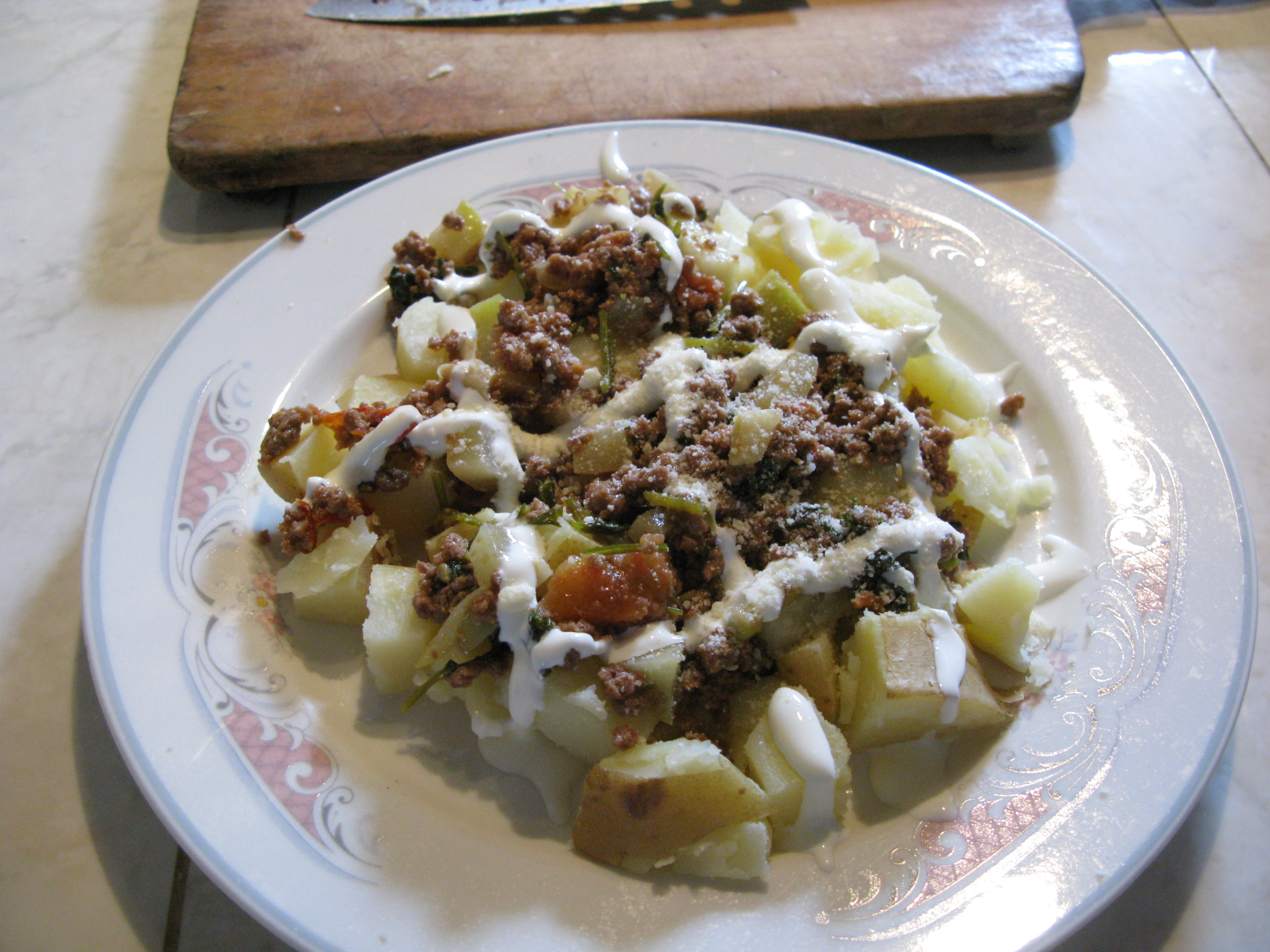
This Instructable deals with the old adage: "If you are in a hurry, slow down".
Potatoes: They are as stubborn as any vegetable ever gets on the fire, and trying to hurry them up is nothing but an exercise in futility: in the gas range they'll just keep mooning you, and in the microwave you'll end up with a leathery pouch full of the most disgusting heat-dried flour.
Yuck!
Therefore, I'll explain the way I do them, which I adapted from my grandmother's own way on the gas range.
By the way, my grandmother would always say one thing about potatoes: if you have time to cook one, better cook three. In the gas range it wasn't so obvious, but its just a lot more obvious nowadays. My own rule-of-thumb is The time it takes to cook three potatoes is slightly less than twice what it takes to cook a single one, subtracting the time it takes for the water to come to the boiling point. this rule also applies to rice: I make a single cup in 17 minutes, but two in 25 and three in 32.
Anyway, all done, this instructable shouldn't take more than 20 minutes.
Select and Wash the Potatoes and the Pot





Potatoes
Water
A microwave-safe cooking pot, as close to the size of the potatoes as possible
A microwave oven
Select the potatoes you'll need. In keeping with my grandmother's wisdom, I'm preparing three, and for demonstration purposes I'll pick them unevenly sized. It is possible to cook them together as long as the largest isn't more than twice as heavy as the smallest.
The small one I want now: I'm hungry; the medium one might be part of tomorrow's lunch; the large one is definitely for tomorrow's dinner, as I'll be making some soup.
So, select potatoes that aren't too unevenly sized, then arrange them evenly inside a pot. Try to select one that hugs them snugly, but where the water would still cover them (even if barely). The first image reflects this, although not as well as the images on the following step.
Drip dry them and the container. Don't waste paper.
Additionally, if you want to peel them, do so now.
Prepare Them for the Microwave





DO NOT tap the potatoes. The water buffers the heat and keeps them from exploding. Besides, if you were to spice the water as I put on the following paragraph, the potatoes would become too salty.
Optionally, put some spices on the water. They won't penetrate too deeply, but a sensible mouth will be able to taste them on your next dish. Personally, I add about a half-teaspoon of salt, a tablespoon of vinegar and some seasoning herbs. This makes for a briny herbal tea, so better if you haven't tapped the potatoes yet.
If you peeled your potatoes, be sensible with the salt: the skin protects them a lot from absorbing salt.
First Cycle Inside the Nuke!




Please see the comments attached to the images. And I'm making a point tapping the largest potato: that's always the slowest.
I'm aiming at getting the small one slightly overdone, the medium precisely done and the large one just slightly underdone, so next time I check on them I'll test the medium one.
Second Round With the Nuke!


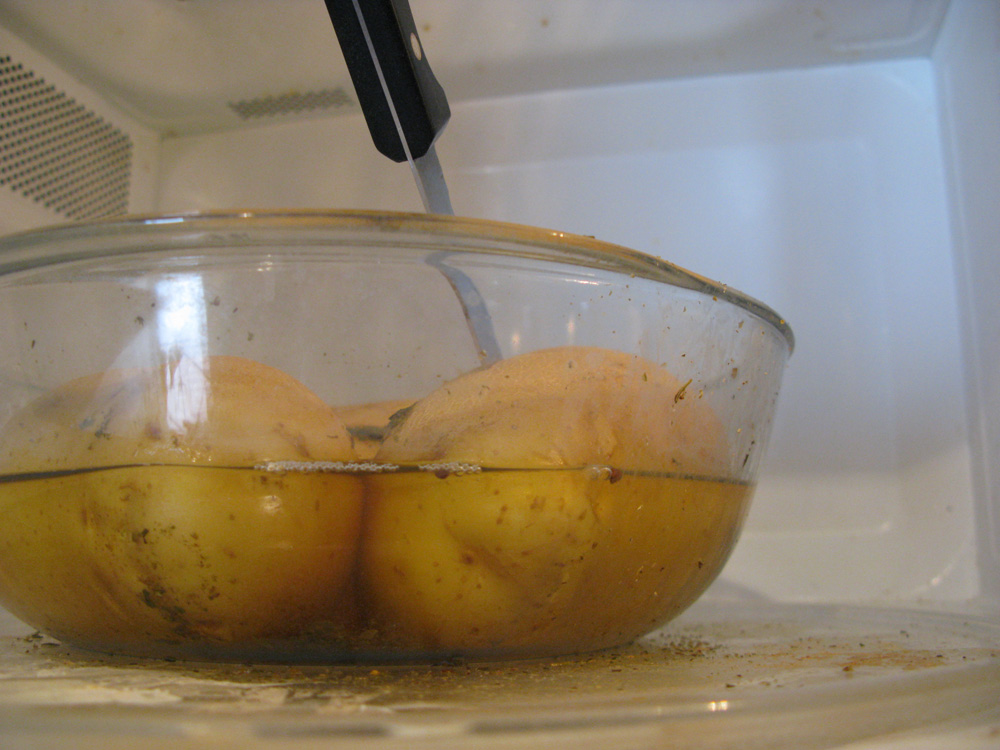
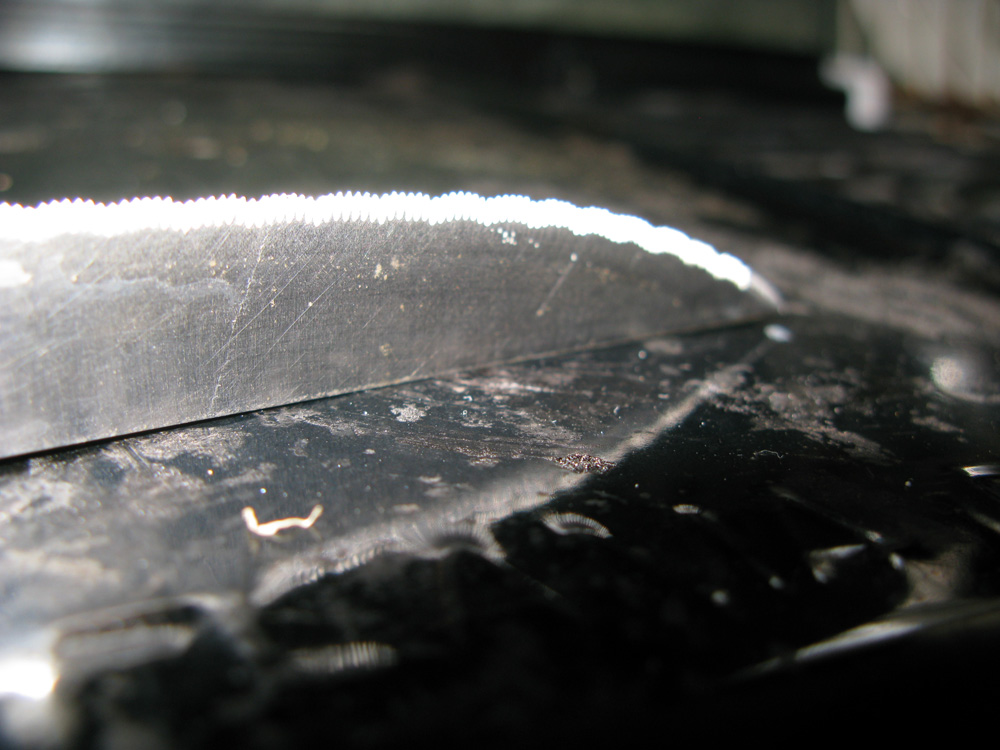




Most of the information on this step is right on the images. The fourth one is particularly important, as it shows how the knife has to look to judge if the potatoes are done or not.
On the following steps, I'll detail what I did with the three potatoes. Remember, the three of them are at different stages of cooking.
Small Potato: Slightly Overdone
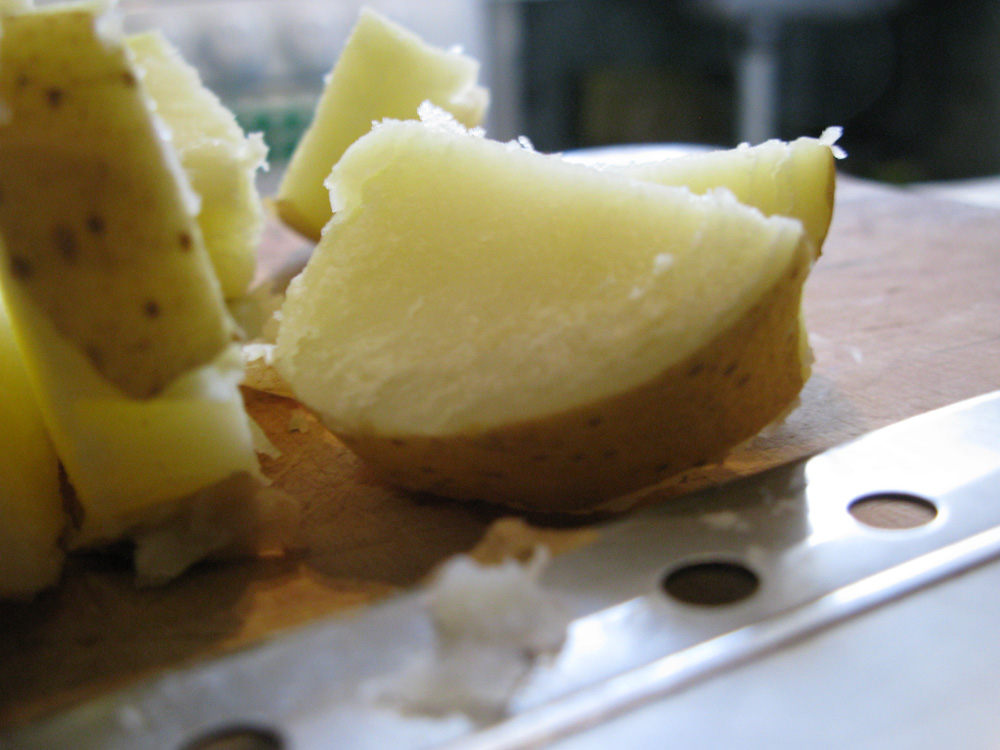


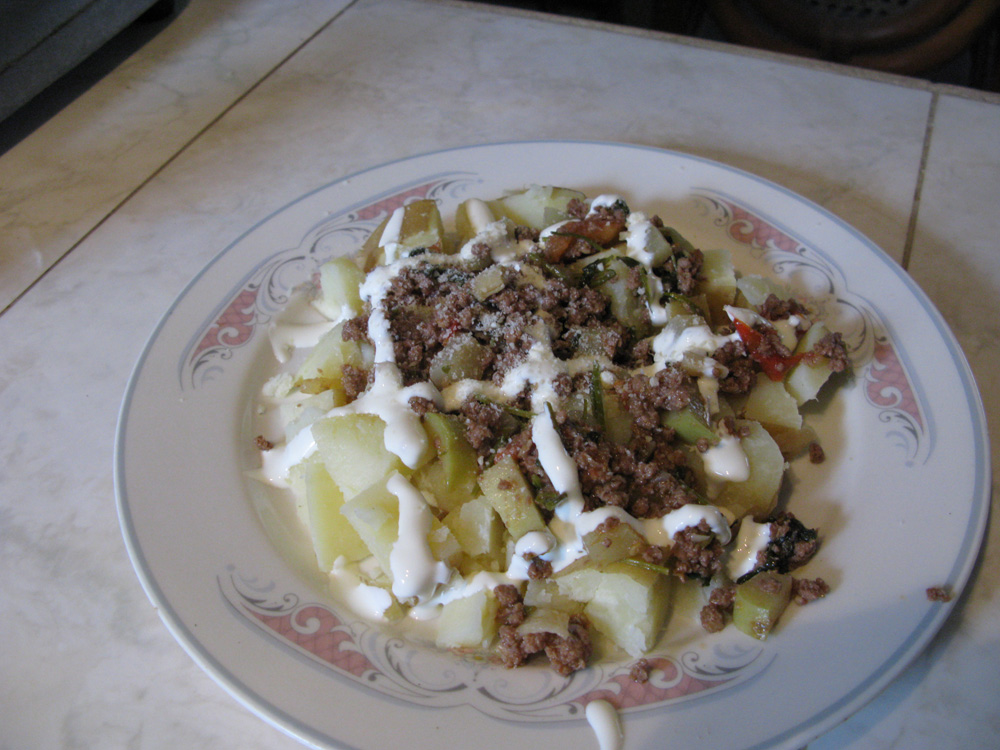

Mid Sized Potato: Perfectly Done






Besides, perfectly done like this, it took the knife perfectly and didn't give me any gases.
This isn't an Instructable about my cold tuna salad, but I may explain it if I feel enough curiosity from the community.
Large Potato: the Cook's Lifesaver


I'm cool with it: that's what we tend to keep some slightly undercooked potatoes in the fridge:
*If a dish has too much salt, you just dice a cooked potato and it'll soak up the extra salt.
*If you have some unexpected visitors, you can slice the potato really thin and get some really tasty fries.
*If nothing else, you can always stuff it with cheese and give it two minutes on the microwave.
Besides, being just slightly undercooked, it's incredible for precision cutting.